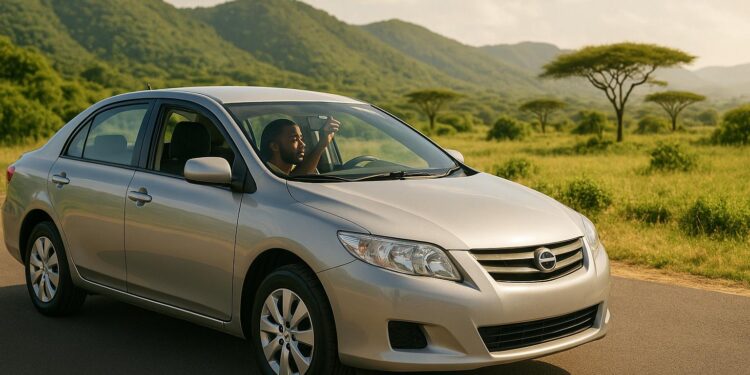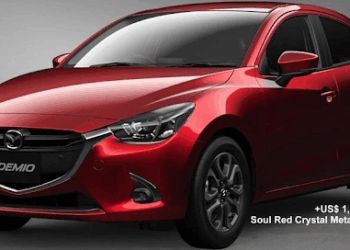Fuel prices in Kenya are rising, and poor road conditions, heavy traffic, and irregular driving habits are making things worse for drivers. But you can save money and reduce fuel use with a few simple changes.
Here’s how to start saving fuel today:
- Maintain your car regularly: Clean oil, fresh air filters, and good spark plugs keep your engine running smoothly and efficiently.
- Check your tires: Proper tire pressure improves fuel economy by up to 3%, while wheel alignment and regular rotation help reduce unnecessary fuel use.
- Drive smarter: Avoid aggressive driving, maintain steady speeds, and plan routes to skip traffic jams.
- Reduce idling: Turn off your engine during long stops to save fuel and money.
- Lighten your load: Remove unnecessary weight and roof racks to reduce drag and improve mileage.
- Use your car’s features wisely: Use air conditioning only when necessary and monitor your fuel consumption with apps or vehicle tools.
- Carpool and time fuel purchases: Share rides to save on costs and track fuel price trends to buy at the best time.
How to save money on fuel in any car – 10 fuel saving tips that actually work
Regular Vehicle Maintenance
Keeping your engine in top shape is one of the easiest ways to improve fuel efficiency. In Kenya, where driving conditions can be tough, sticking to a regular maintenance schedule is even more important.
"Regular car servicing and maintenance can sometimes seem like a hassle, but it will save you a lot of money in the long run. Your car will be more fuel efficient and less likely to break down." – Halfords UK
When components like filters or spark plugs are dirty or worn out, your engine has to work harder, which burns more fuel.
Engine Servicing and Care
Your engine’s performance depends on multiple components working together efficiently. One of the simplest and most effective steps is ensuring routine oil changes. Clean oil reduces friction between moving parts, allowing the engine to run smoothly. Given Kenya’s dusty environment, oil can get contaminated quickly, so regular changes are even more essential.
Air filters also need attention, especially if you often drive on unpaved roads or through construction zones. Dust and debris can clog filters, reducing airflow and making your engine consume more fuel. Replacing air filters frequently is a small step that can make a big difference.
Spark plugs are another key part of your engine’s performance. Worn spark plugs can lead to weak sparks, incomplete fuel combustion, and wasted fuel. Replacing them ensures your engine burns fuel efficiently.
Fuel quality in Kenya can vary, and low-quality or contaminated fuel can hurt your engine’s efficiency. Problems like engine knocking, reduced fuel economy, and black smoke emissions are common with poor-quality fuel. To avoid these issues, buy fuel from trusted stations, clean your fuel injectors regularly, and replace fuel filters as needed.
Be alert to warning signs like jerking, stalling, unusual noises, or burning smells – especially on busy highways like Thika Highway or Mombasa Road. These could signal engine problems that need immediate attention.
"In general, your car engine health determines efficiency in fuel consumption, engine oil and so many other facets. Consider taking your vehicle for regular checkups to avoid problems." – TotalEnergies Marketing Kenya
While engine care is crucial, tire maintenance also plays a major role in keeping your car fuel-efficient.
Tire Maintenance
Your tires have a bigger impact on fuel consumption than you might think. In fact, they account for 20% to 30% of fuel use and 24% of CO₂ emissions from vehicles.
Start by keeping an eye on tire pressure. Under-inflated tires create more rolling resistance, which can reduce fuel efficiency by up to 10%. On the other hand, maintaining proper tire pressure can improve fuel economy by up to 3%. Check your tire pressure every two weeks using a reliable gauge and follow the recommended levels listed in your vehicle manual or on the sticker inside the driver’s door.
Wheel alignment is another factor to consider, especially given Kenya’s rough roads filled with potholes and speed bumps. Misaligned wheels lead to uneven tire wear and higher rolling resistance, which can increase fuel consumption by as much as 10%. If your car starts pulling to one side or you’ve hit a major pothole, it’s time to have your alignment checked.
Rotating your tires every 5,000 to 10,000 km (about 3,100 to 6,200 miles) ensures even wear and helps maintain fuel efficiency. This is especially important on Kenya’s challenging road conditions.
For better pressure stability, you might consider inflating your tires with nitrogen instead of regular air. And don’t forget to replace your tires when the tread depth reaches 3 mm (roughly 1/8 inch). This is especially critical during Kenya’s rainy seasons to maintain grip and safety.
Driving habits also matter. Smooth acceleration, gentle braking, and careful cornering not only improve fuel efficiency but also extend tire life.
"Prevention is always better than cure. Keep your car service on schedule and enjoy the peace of mind that comes with knowing your vehicle is in excellent condition." – Automotive Doctor Motor Garage Limited
Smart Driving Habits for Kenyan Roads
Your driving habits play a big role in how much fuel your car uses. By making some small adjustments, you can save on fuel costs and improve efficiency. Let’s dive into some habits that can make a real difference.
Maintain Steady Speeds and Avoid Aggressive Driving
Driving aggressively – think rapid acceleration, hard braking, and constant speed changes – burns through fuel quickly. It also puts extra strain on your engine. Instead, aim for a steady pace. For example, instead of racing between red lights, ease off the gas and coast when you see traffic ahead. Gradual braking and smooth acceleration not only save fuel but also reduce wear and tear on your car.
On highways, maintaining a consistent speed is key. If your car has cruise control, use it on open roads to keep a steady pace. This helps avoid the small speed fluctuations that happen with manual control, improving fuel efficiency.
Plan Routes to Avoid Traffic Jams
Traffic congestion, especially in Nairobi, is notorious for wasting fuel. Stop-and-go traffic forces your engine to work harder, which means more fuel consumption. To avoid this, plan your trips carefully. Apps like Waze provide real-time traffic updates and can guide you through less congested routes. These tools also help you avoid construction zones or bottlenecks that could delay your journey.
Timing is another crucial factor. Leaving just 30 minutes earlier or later can sometimes mean the difference between a smooth drive and sitting in gridlock. If you know there’s a major event or road closure, consider alternative routes in advance. Having a backup plan can save you both time and money.
Reduce Idling Time
Idling is one of the easiest ways to waste fuel. Surprisingly, idling for just 10 seconds uses more fuel than restarting your car. For instance, a 3-liter engine can burn up to 300 ml of fuel in just 10 minutes of idling. Over time, this adds up significantly.
If you’re stuck in heavy traffic or waiting at a long light, turn off your engine if the wait is likely to be more than a minute or two. Many modern vehicles now include stop-start technology, which automatically shuts off the engine when you stop and restarts it when you press the gas pedal. This feature is especially useful in city driving, where frequent stops are common.
Also, when warming up your car in the morning, keep it brief. Unlike older models, modern engines don’t need long warm-up periods – just a minute or two will do, even on cooler mornings. And if you’re parked or waiting for someone, turn off the engine rather than letting it idle. Not only does this save fuel, but it also reduces engine wear and cuts down on emissions.
sbb-itb-e5ed0ed
Smart Use of Vehicle Features
Once you’ve fine-tuned your maintenance routine and driving habits, the next step is making the most of your car’s built-in features. These can either help you save fuel or waste it, depending on how you use them. By leveraging them effectively, you can reduce fuel consumption without compromising on comfort.
Use Air Conditioning Strategically
Running the air conditioning (A/C) increases fuel usage, so it’s important to use it wisely. At lower speeds – like when you’re navigating residential streets or stuck in traffic – opening the windows is often a better option for saving fuel. On the other hand, at higher speeds on highways, keeping the windows closed and using the A/C moderately is more efficient. Open windows at high speeds create aerodynamic drag, which forces your engine to work harder and burn more fuel.
Lighten the Load and Reduce Drag
Extra weight in your car means your engine has to work harder, which eats into your fuel efficiency. Did you know that carrying an additional 100 pounds can lower your fuel economy by about 1%? Clearing out unnecessary items from your vehicle is a quick way to improve efficiency.
Aerodynamics also play a big role. Reducing drag by 10% can save 5–7% on fuel, while a 20% reduction can save up to 14%. Removing unused roof racks, cargo boxes, or bike carriers is an easy way to cut drag and improve your mileage. Once you’ve tackled weight and drag, the next step is to keep an eye on your driving habits.
Monitor Your Driving Habits
Paying attention to how you drive can reveal areas where you’re losing efficiency. Apps like Fuelly and MyRide Kenya allow you to log fuel fill-ups, calculate mileage, and identify better routes. Many modern vehicles also come equipped with eco-driving aids and real-time fuel consumption displays. Combine these tools with smartphone apps to track your fuel use and tweak your habits for better results.
In 2022, eDriving analyzed data from 3.5 billion miles and found that high-risk drivers could improve their driving scores by as much as 51% within six months – and by up to 70% over 18 months.
"Our comprehensive digital driver risk management offering helps organizations worldwide reduce incidents, collisions, injuries, license violations, carbon emissions, and total cost of fleet ownership." – eDriving
If you’re managing a fleet or worried about fuel theft, fuel management systems can be a game-changer. These systems track real-time fuel consumption and can prevent up to 90% of fuel theft incidents. While the initial cost starts at around $280 (roughly Ksh 40,000, depending on exchange rates), the long-term savings on fuel and added security often justify the expense.
For a simple start, use your smartphone and the apps mentioned above to log your fuel consumption. Once you spot patterns in your usage, you’ll be able to make smarter decisions about your driving habits and maximize efficiency.
Money-Saving Tips for Kenyan Drivers
Beyond regular maintenance and efficient driving habits, adopting smart financial strategies can help Kenyan drivers cut down on fuel costs. Two effective approaches are carpooling and timing fuel purchases.
Carpooling and Ride-Sharing
Sharing rides is one of the simplest ways to save on fuel. By carpooling with just one other person, you can immediately reduce your fuel expenses by half. This can make a big difference, especially as fuel prices in Kenya continue to rise – reaching Ksh 8.99 for petrol, Ksh 8.67 for diesel, and Ksh 9.65 for kerosene per liter as of July 2025.
Carpooling isn’t just about saving money; it also helps ease traffic congestion by reducing the number of cars on the road. Fewer vehicles mean less idling, lower emissions, and reduced wear and tear on your car. In fact, carpooling could cut daily combined CO₂ emissions by up to 75% and save an estimated US$7.40–9.18 trillion in operating costs if widely adopted.
Getting started is easy. You can invite friends, neighbors, or coworkers who share similar routes to join you. Many workplaces and schools even encourage carpooling by offering perks like reserved parking spots. Globally, platforms like BlaBlaCar in Europe and initiatives by the Metropolitan Transportation Commission in the San Francisco Bay Area have demonstrated how ride-sharing can lead to significant savings while also reducing environmental impact.
While carpooling is a great way to save, timing your fuel purchases can also make a noticeable difference.
Time Your Fuel Purchases
Fuel prices in Kenya are adjusted monthly by the Energy and Petroleum Regulatory Authority (EPRA), based on factors like global oil prices, exchange rates, taxes, and transportation costs. By paying attention to these trends, you can plan your fuel purchases strategically. For example, if prices are expected to rise, filling up before the new rates take effect can save you money. Conversely, if a price drop is anticipated, waiting (as long as your tank isn’t empty) can be more cost-effective.
Keep an eye on global oil prices and exchange rate fluctuations. While the government sometimes uses a Stabilization Fund to cushion price increases, this depends on the fund’s availability. Policy changes can also have a big impact. For instance, fuel prices spiked in July 2025 after subsidies were removed and the fuel tax was doubled.
Another tip is to take advantage of loyalty programs offered by major fuel stations. These programs often provide discounts or cashback, which might seem small per transaction but can add up over time. Additionally, understanding the Petroleum Development Levy – charged per liter to support price stabilization, infrastructure, and training in the petroleum sector – can help you better plan your fuel expenses.
Conclusion: Start Saving Fuel Today
Improving fuel efficiency in Kenya doesn’t mean shelling out for costly upgrades or making drastic lifestyle changes. Simple adjustments in how you drive and maintain your car can make a noticeable difference. For example, under-inflated tires can increase fuel consumption by 10%, aggressive driving can spike it by over 40%, and idling for just 10 minutes wastes about 300 ml of fuel. Small, consistent efforts can lead to immediate savings.
Keep your tires properly inflated, maintain steady speeds between 40 and 56 mph, and turn off the engine during long stops. Lighten your car by removing unnecessary items, plan your routes to avoid heavy traffic, and carpool when possible.
Kenya’s road transport emissions are projected to rise dramatically – potentially increasing 4 to 31 times from 2010 to 2050 if current trends continue. This makes individual efforts to drive smarter and maintain vehicles properly more critical than ever. By adopting these habits, you’ll not only save on fuel costs but also contribute to reducing environmental harm.
Start today. These simple changes can help you cut expenses and play a part in protecting the planet.
FAQs
How can I make sure the fuel I buy in Kenya is high quality and safe for my car?
When fueling up in Kenya, it’s crucial to choose reliable gas stations known for maintaining high standards. Look for certifications or compliance marks from organizations like the Kenya Bureau of Standards (KEBS) and the Energy and Petroleum Regulatory Authority (EPRA), which work to uphold fuel quality.
It’s also important to check the fuel’s Research Octane Number (RON) rating, as this determines its quality and compatibility with your vehicle. Steer clear of stations with a reputation for poor or inconsistent fuel quality. If you’re unsure, refer to your car’s manual for the recommended fuel specifications to ensure optimal performance.
How can I use my car’s air conditioning efficiently to save fuel in Kenya’s climate?
To save fuel while using your car’s air conditioning in Kenya’s warm climate, try limiting AC use to when it’s absolutely needed. Set it to a moderate temperature – cool enough to stay comfortable but not excessively cold. This reduces the load on your engine, helping you conserve fuel.
When driving at slower speeds or stuck in stop-and-go traffic, consider switching off the AC and relying on the car’s ventilation system. At low speeds, the engine has to work harder to power the AC, which can burn more fuel. Additionally, keeping your AC system in good shape – like checking refrigerant levels and ensuring all parts are working as they should – can make it more efficient and cut down on fuel use. By following these tips, you can stay cool and save on gas.
How does carpooling help save fuel and benefit the environment in Kenya?
Carpooling is a smart way to cut down on fuel consumption and ease the strain on the planet. By reducing the number of cars on the road, it helps lower fuel use, decreases traffic jams, and significantly cuts harmful emissions. The result? Not only do you save money on gas, but you also contribute to cleaner air and a healthier community.
Take Kenya, for example. With transportation being a major consumer of fuel, carpooling could bring about measurable economic and environmental gains. Sharing rides isn’t just about saving money – it’s a practical step toward reducing your carbon footprint and making daily commutes smoother for everyone.
Related posts
- Ultimate Guide to Car Maintenance Budgeting in Kenya
- Ultimate Guide to Eco-Driving in Kenya
- Top Fuel-Efficient Cars for Daily Commutes in Nairobi
- How to Know When It’s Time for a Full Service in Kenya




